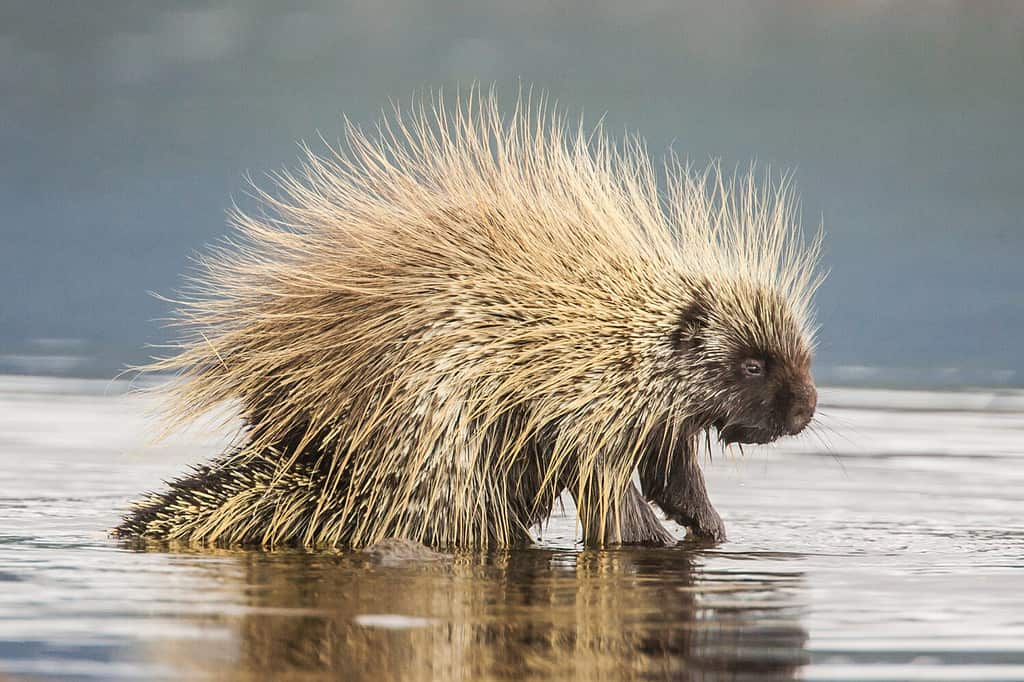A New England state located on the northern coast, Connecticut is known for picturesque towns, the prestigious Yale University, and its rich cultural history. Winters are cold and snowy, while summers can get very hot and humid. The weather in Connecticut is influenced by the Atlantic Ocean to the east, and the hot and cold air masses flowing from the interior of the continent from the west. Although summers get warm, there was one heatwave that rolled through the state causing extreme temperatures. Read on to learn about the hottest temperature ever recorded in Connecticut.
What was the Hottest Temperature Ever Recorded in Connecticut?

The hottest temperature ever recorded in Connecticut was 106 degrees Fahrenheit on July 15, 1995, in Danbury.
©Leestudio/Shutterstock.com
Connecticut is no stranger to extreme temperature variations. The hottest day in the state occurred during a 10-day heatwave in 1995. The hottest temperature ever recorded in Connecticut was 106 degrees Fahrenheit on July 15, 1995, in Danbury. (Conversely, the coldest temperature ever recorded in Connecticut was negative 32 degrees Fahrenheit set in 1943 in Falls Village.) Danbury not only holds the record for the hottest day but is also considered the hottest city in the state.
The Derecho of July 15, 1995
In addition to being a scorcher, on July 15, 1995, a rare derecho blew through the state bringing high winds and destruction. A derecho is a fast-moving band of thunderstorms with tornado-force winds that forms when the weather is hot and humid.
On this day, a very warm and humid air mass contributed to a series of derechos forming across the United States. One of those derechos began in Michigan, passing through Ontario and New York, and finally hitting New England (including Connecticut) on the morning of July 15th.
About Danbury: Connecticut’s Hottest Place

Danbury is located 50 miles northeast of New York City.
Danbury is located in western Connecticut along the Still River in Fairfield County. Situated about 50 miles northeast of New York City, it’s the seventh-largest city in the state. Not only is Danbury home of the hottest temperature ever recorded in Connecticut, it’s also considered the hottest place in Connecticut overall. The town has an average maximum summer temperature of 84 degrees Fahrenheit.
Oddly enough, the original name of the town was “Swampfield,” when settlers came to the area in 1685 but was changed to Danbury a couple of years later. Danbury is also known as “Hat City” for its robust hat-making industry that occurred in the late 1700s and 1800s. Although the industry has long left Danbury, the town was the biggest hat manufacturer in America for over 100 hundred years and is still often referred to as Hat City.
The Polluted Still River
The Still River passes through Danbury and has been significant in the growth and industry of the town. Sadly, the Still River is significantly polluted by the farming industry. Further, mercury poisoning from Danbury’s hatting industry contributed to the problems. Efforts have been made in recent years to clean up the river, but despite the progress, it’s still considered the most polluted river in the Housatonic watershed.
Danbury’s Hot Summers
The warm summers in Danbury give locals and tourists many opportunities for outdoor recreation. Some of the top activities in the area include:
- Hiking along the 17-mile-long Ives Trail & Greenway that passes by glacial erratics (rocks that have been transported by ice and deposited elsewhere.)
- Playing golf at the challenging and picturesque Richter Park Golf Course.
- Visiting the Wooster Mountain State Park Scenic Preserve where you can hike, hunt, or skeet shoot.
- Taking your dog for a hike at the 140-acre Bear Mountain Reservation, with its dog-friendly hiking trails and access to Candlewood Lake (the largest manmade lake in Connecticut.)
Average Temperatures in Connecticut

Seen here are views of Thomaston Dam and portions of the Naugatuck River Valley in Thomaston Town, CT.
©Shanshan0312/Shutterstock.com
Connecticut’s annual average temperature is 49.9 degrees Fahrenheit. The coldest month is January, with an average temperature of 27.2 degrees Fahrenheit, while the warmest month is July, with an average temperature of 72.4 degrees Fahrenheit. The average summer high in Connecticut is around 83 degrees Fahrenheit, an over 20-degree difference from the record.
Summer days over 90 degrees Fahrenheit are more common in the northwest and central part of the state, while the cool ocean breezes along the coast help to keep temperatures in check.
Is It Getting Hotter in Connecticut?
According to the National Oceanic and Atmospheric Administration (NOAA) state climate summary of 2022, temperatures in Connecticut have risen almost 3.5 degrees Fahrenheit since the beginning of the 20th century. Further, the top hottest seven summers have occurred since 2005, with August 2022 as the hottest on record.
How Do Animals Beat the Heat in Connecticut?

Black bears like to cool off in water on a hot day.
©jo Crebbin/Shutterstock.com
Connecticut is known for its scenic rolling hills, sandy beaches, picturesque coastal towns, and gorgeous fall foliage. Within this naturally beautiful state lives a variety of wildlife. Just like humans, wild animals have had to learn how to adapt to the heat.
Many animal species will take shelter during the hottest part of the day, shed their winter coats, and take a dip in a cool water source to beat the summer heat. Here are some examples of wildlife in Connecticut and how they can thrive in extreme temperatures.
Red Fox
Red foxes are the largest fox species in the world. Abundant in Connecticut, red foxes have adapted to both winter and summer. They shed their long shaggy winter coat in the spring and grow a shorter, cooler coat of fur for summer. During hot sunny days, red foxes seek shelter in the shade, coming out to hunt at night when temperatures drop.
Piping Plover
These tiny migratory shorebirds breed and nest on the beaches of Connecticut during summer from late March through August.) Although they need warm weather to survive, extreme temperatures can be fatal to their eggs. However, piping plovers were found to be surprisingly adaptable in a recent study. During hot weather, the male bird takes turns incubating the eggs during the day so both birds can wet their breast feathers in the water to keep themselves and their eggs cool.

The migratory piping plover keeps cool in hot weather by wetting its breast feathers in the cool ocean water.
©Randy G. Lubischer/Shutterstock.com
Black Bear
Black bears can be found throughout Connecticut. They were wiped out from the state in the mid-1800s, but have made a comeback in recent years. These bears can survive in extreme heat by losing heat through their paws. And, like foxes, they shed their warm winter coats to keep cooler in the summer. Black bears will also look for cool shady spots to keep out of the hot sun. Or they may take a dip in cool water, whether it’s a pond, stream, or a backyard swimming pool.
Raccoons
Commonly seen in Connecticut, raccoons are abundant throughout the state. This opportunistic species will not only forage through people’s garbage cans, but head into basements and crawl spaces looking for a cool shelter during the hottest part of the day. They sweat through their hands and feet and pant to keep cool. Sometimes they are known to take a refreshing dip in a pond, river, or other water source when the temperatures climb.
Porcupines

Porcupines shed their winter coats to keep cool in the summer.
©Jukka Jantunen/Shutterstock.com
These fascinating creatures are found mainly in the northwest corner of Connecticut. Porcupines are large and elusive rodents. Nocturnal animals, they only come out at night and miss the hottest part of the day. They also keep cool in the summer by shedding their winter underfur.
Timber Rattlesnake
The timber rattlesnake, one of the two venomous snake species found in Connecticut, makes their homes in rugged terrain and deciduous forests. They typically come out during the day but will change their habits when temperatures climb. If the weather gets much over 90 degrees Fahrenheit, the rattlesnake will rest during the day and come out at night when it’s cooler.
Thank you for reading! Have some feedback for us? Contact the AZ Animals editorial team.








